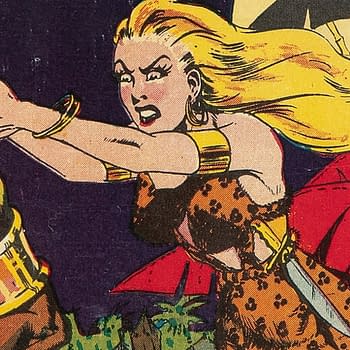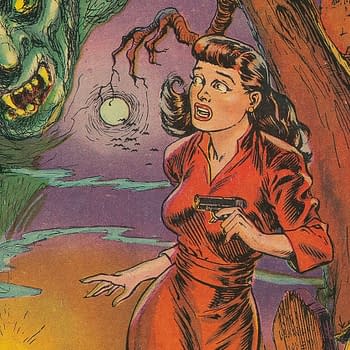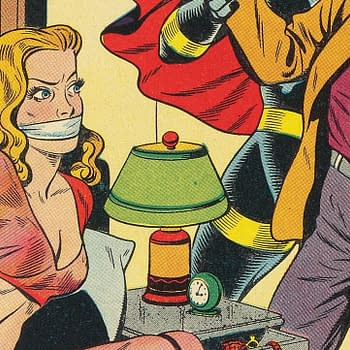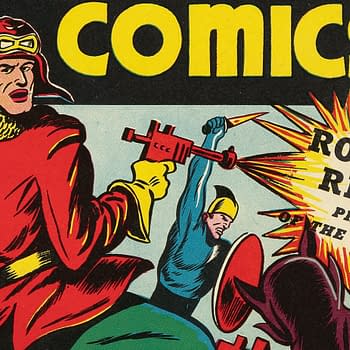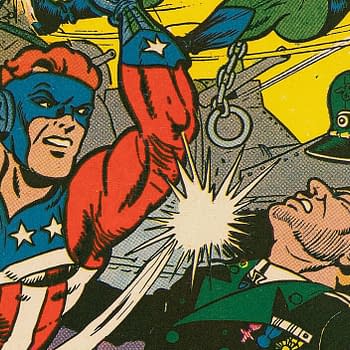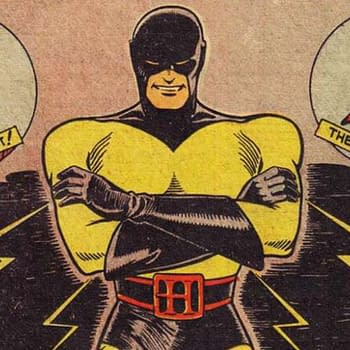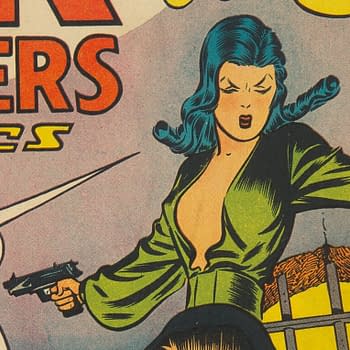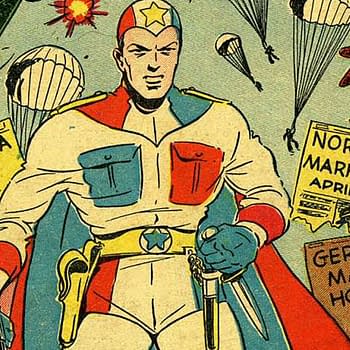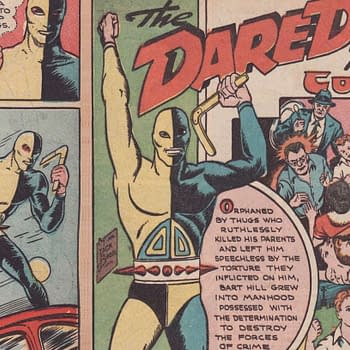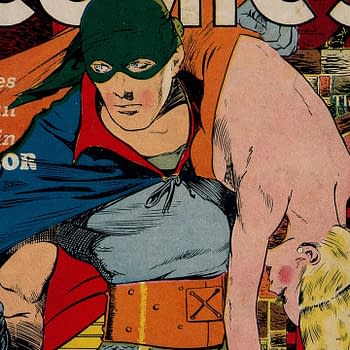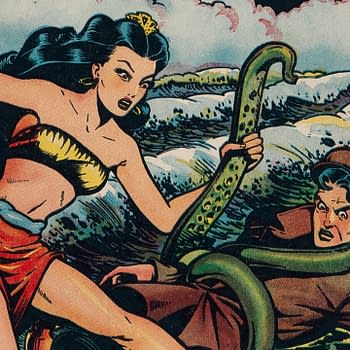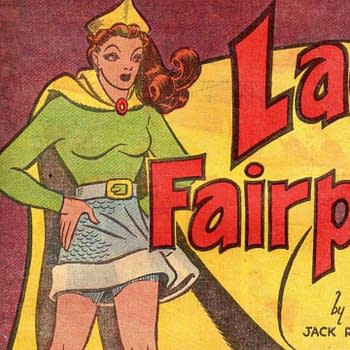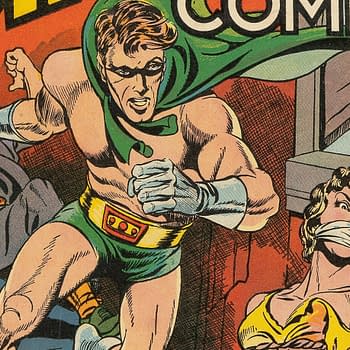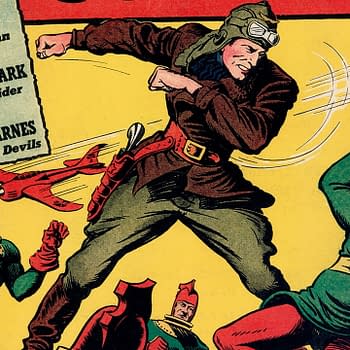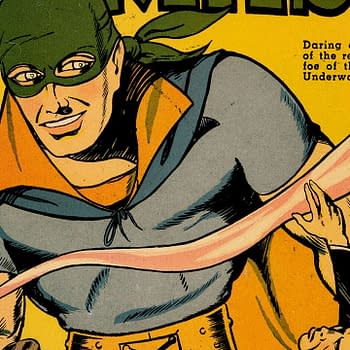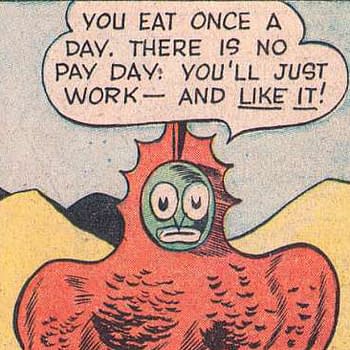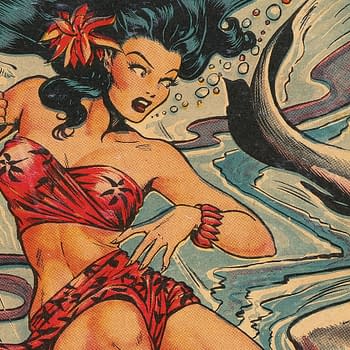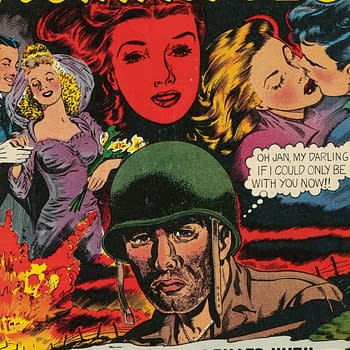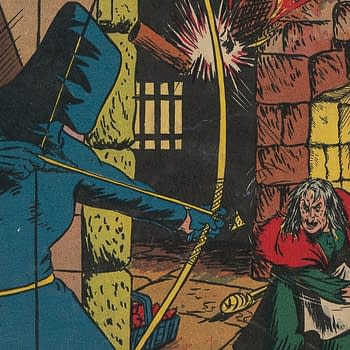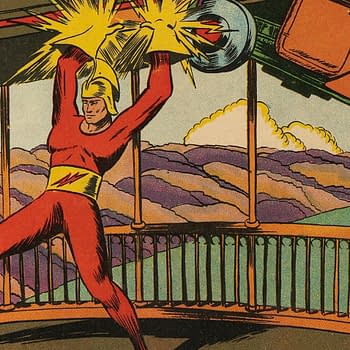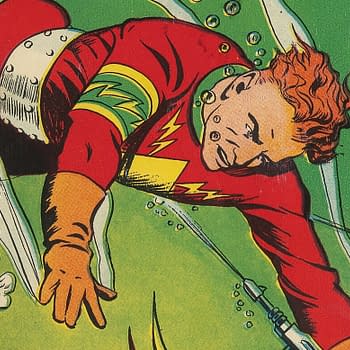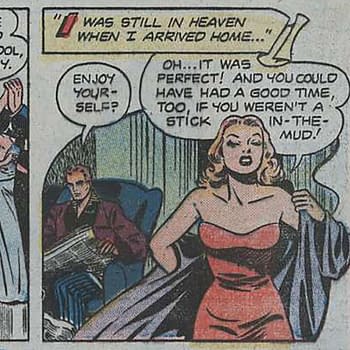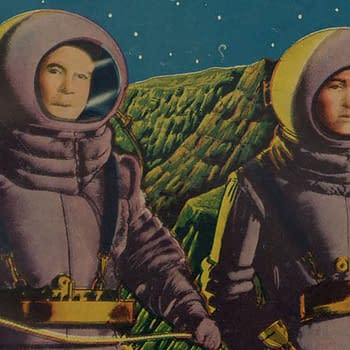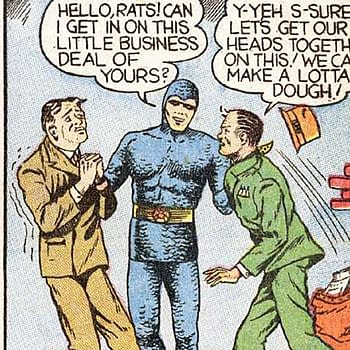Sheena became the regular cover feature of Jumbo Comics beginning in issue #17, and would stay on the title's covers for the next 143 issues.
Heritage Sponsored Archives
Ghost Comics #1 features a cover by the underappreciated Maurice Whitman, who defined the look of Fiction House in the 1950s era.
The Matt Baker cover of Dairy Secrets #15 represents a romance comic filtered through both moral panic and government espionage.
Inside a cover by the legendary Alex Schomburg, The Black Terror #24 also features work by Frank Frazetta, Jerry Robinson and Mort Meskin.
Rocket Comics #3 may be the rarest comic book from Hillman, the result of the publisher's first forray into comics with its business in flux.
Known for its Bob Montana cover and an early Archie appearance also by Montana in this issue, Pep Comics #32 is a classic example of the comics of its era.
The saga of the Black Hood during the WW2 era and beyond makes the character a historically unique part of the Golden Age.
In her debut appearance in Air Fighters Comics, Valkyrie was persuaded by Airboy to switch sides and join the Allies during WWII.
Bill Everett's The Conqueror debuted in Victory Comics from Hillman Periodicals as a superhero transformed by cosmic rays.
Dick Briefer put his Frankenstein monster through its paces in the Prize Comics run, including the Prize superheroes vs the monster.
Silver Streak Comics #6 introduced a character who would have an important impact on Golden Age comics and beyond with Daredevil.
Mystery Men Comics #3 is best known for its Lou Fine cover, but what does it have to do with William Peter Blatty of The Exorcist fame?
Matt Baker's first South Sea Girl cover for Seven Seas Comics #3 would lead to work on Phantom Lady, Rulah and beyond.
Bang-Up Comics #1's Lady Fairplay, had "unlimited energetic powers" making her "goddess of chastisement and dreaded foe of the underworld."
The legendary team of Joe Simon and Jack Kirby collaborated on comic book covers for the first time on 1940 issues of Champion Comics.
One of Hillman's debut comic book titles, Rocket Comics featured Rocket Riley, a character influenced by Buck Rogers and Flash Gordon.
The Green Mask who debuted in 1940s Green Mask #1 was a complete reboot of the character whose previous existance had been a mystery indeed.
Kid Eternity's 1942 origin moment in Hit Comics #25 was a direct reaction to German U-boat attacks on merchant shipping along the East Coast that year.
In Prize Comics' future of 1982, Power Nelson fights for citizens facing food shortages, pandemics, and forced labor, and the Amazon Regiment in a dystopian world.
In Seven Seas Comics #4, Matt Baker's South Sea Girl stars in a movie which seems to point to the character's film inspirations.
An L.B. Cole cover with a Jay Disbrow interior story to match gives True-to-Life Romances #13 the classic Star Publications one-two punch.
Considered the first post-Superman costumed superhero, The Arrow got his first cover on Funny Pages V3 #7 in 1939.
Speed Comics, a relatively famous name among Golden Age comic book titles, was started by a company named after a small AL town.
The star of Sure-Fire Comics and Lightning Comics, Flash Lightning got his powers from an amulet given to him by an ancient Egyptian figure before Dr. Fate.
For many Golden Age collectors, a classic Schomburg cover is a collecting goal in itself, and his cover for Black Terror #20 (1947) delivers.
1952's Pictorial Romances #13 with Matt Baker cover and art features the kind of messy reality of love and life that would soon be scrubbed from the newsstands.
Best known for the creation of Marvel's Human Torch, Carl Burgos' White Streak in Target Comics was also a powerful android.
Strange Adventures #1 represents a key turning point in the history of DC Comics and is a fascinating artifact of science fiction history.
Blue Beetle evolved gradually over his first few months in Mystery Men Comics, with the elements of his classic costume taking shape in issue #4.
After Daredevil's debut in Silver Streak Comics #6, Jack Cole gave him a new costume and his first cover on Silver Streak Comics #7.



